This week I’m delving into a book of clothing pattern drafts compiled by Bombardier W R Richards from the Royal Garrison Artillery in 1905. The book is bound in brown leather and cloth with Richard’s name embossed on the cover in gold and the endpapers patterned in a red, blue, black and cream marbling.
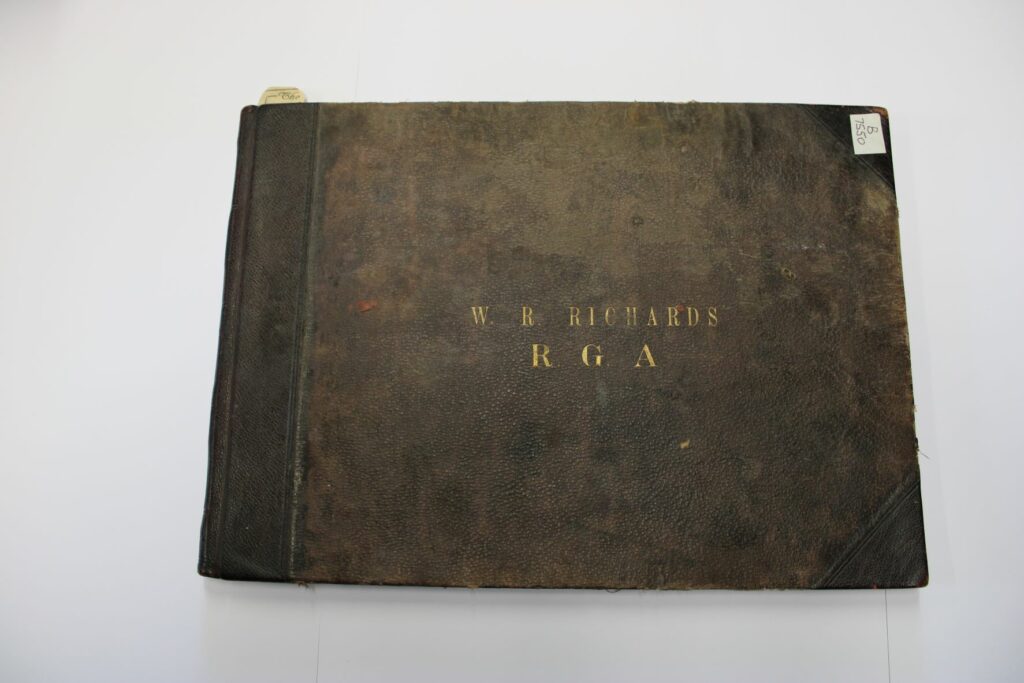
Royal Garrison Artillery in 1905.
Richards trained as a master tailor at the Royal Army Clothing Factory, London in 1905 and proved his drafting skills through this book. The pattern drafts were examined by H.Morris, his instructor and J. Hawkesfore, Chief Master Tailor, to certify his completion of the course. The book contains diagrams with detailed measurements of both military and civilian clothing from a Bandsmen’s tunic to Ladies riding trousers.
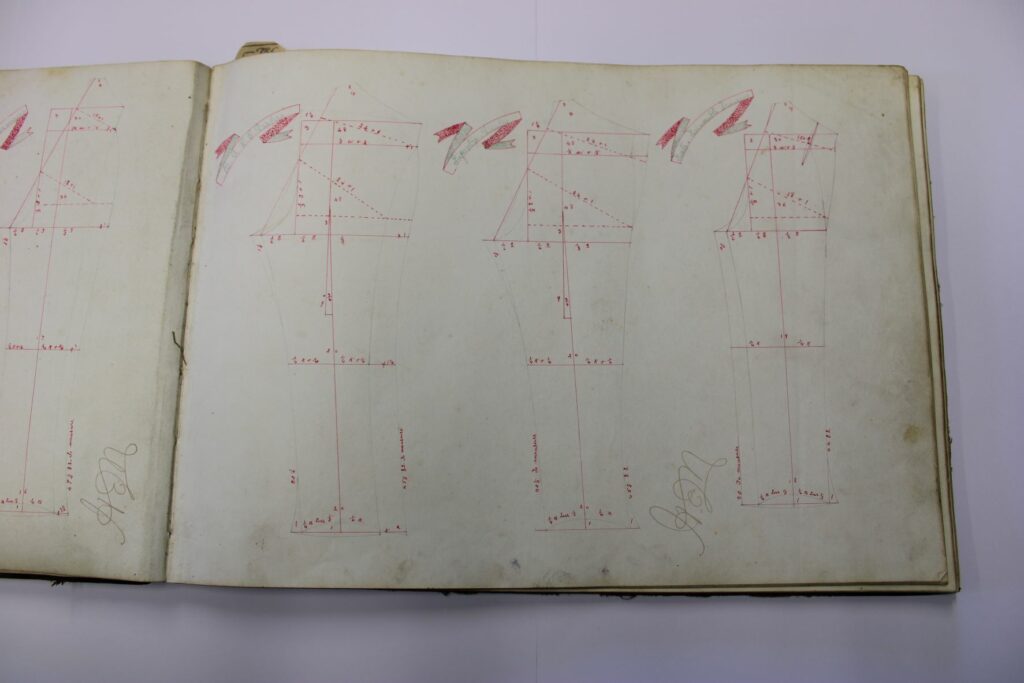
Pasted onto the first page is a handwritten letter by Richards marketing himself to the Commander of the Royal Artillery for the job of Master Tailor with the Devon and Cornwall Fire Command. Addressed to ‘34th Fire Command’, this may have been referring to the 134th Heavy Battery. The 134th Heavy Battery were a Cornish battery of the Royal Garrison Artillery (RGA). The RGA was formed in 1899 as an arm of the British Army’s Royal Regiment of Artillery or ‘The Gunners’ to help man the guns of fortresses including coast artillery batteries like those in Cornwall. Being a member of the RGA upon writing the letter inside the book suggests Richards was an artillery volunteer looking for a job within the army using his tailoring qualifications. The 1st Cornwall Artillery volunteers was formed in 1859 following a scare of invasion by the French to man the coastal guns and were later assigned to the RGA.
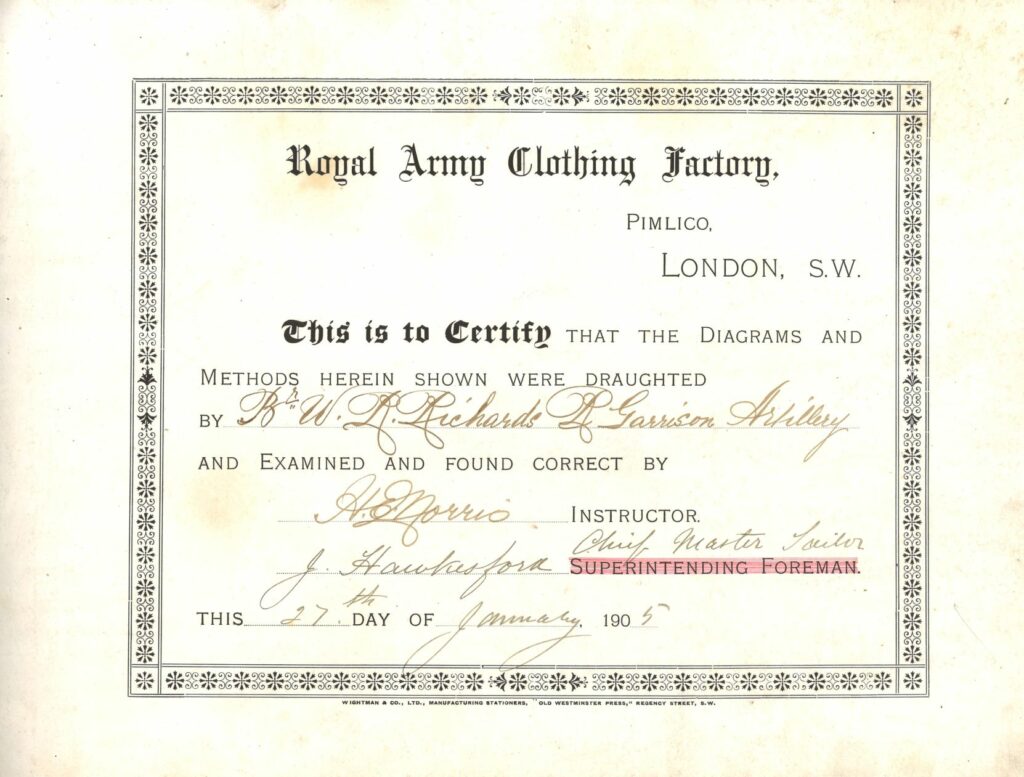
When the Cornwall Artillery Volunteer Corps (AVC) was first formed, the 3rd AVC based in Fowey wore a uniform consisting of a blue knitted fisherman’s jumper with red braiding along the collar, cuffs and bottom edge. The front had an emblem derived from the Duchy of Cornwall coat of arms embroidered in red wool. By 1872 all the Corps wore the Royal Artillery uniform which was a blue tunic with black cord trimmings and blue cloth trousers with a red stripe down the outer edges and white gloves. A black leather belt was worn on the right hip and the red embroidery was brought forward from the fisherman jumper to the tunic shoulder straps which declared the number of the battery the soldier was in.
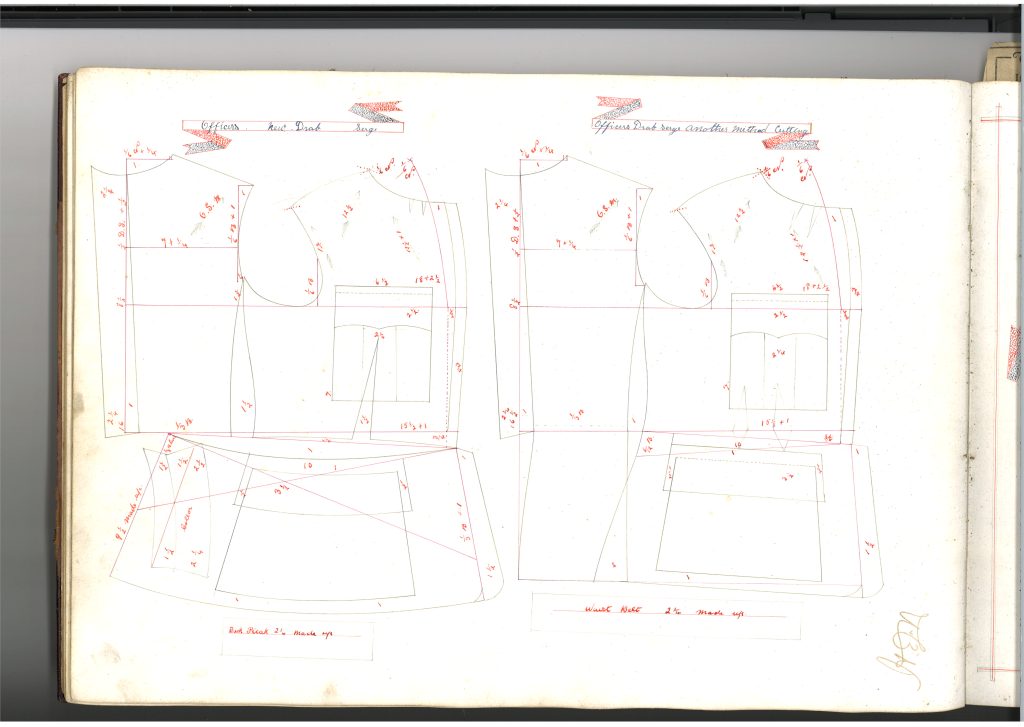
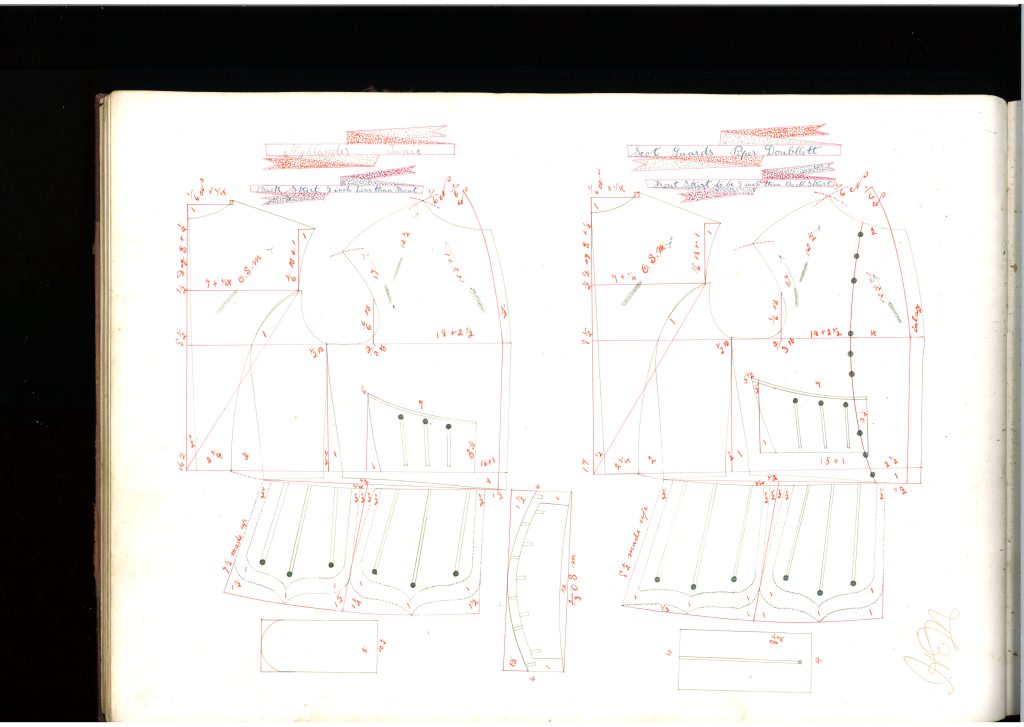
A New Exhibition for Summer
As I research more into our collection, I am interested to discover how uniforms were made and by whom. Specialist military tailors remain today such as Gieves & Hawkes (formerly Hawkes & Co) on Saville Row in London, however, they focus on ceremonial dress versus service dress. In times when mass production of uniform was needed, such as in the First and Second World Wars, how did this process work? Did large manufacturers take on this responsibility? What happened to tailors such as W R Richards? I hope to bring this research back to the local scale of Bodmin Barracks and how uniforms were made and maintained by both the soldiers themselves and within the local community.
Written by Fran Singleton, Trainee Curator
Fran is researching for a new exhibition looking at textiles and uniform which will be opening for summer 2021!

